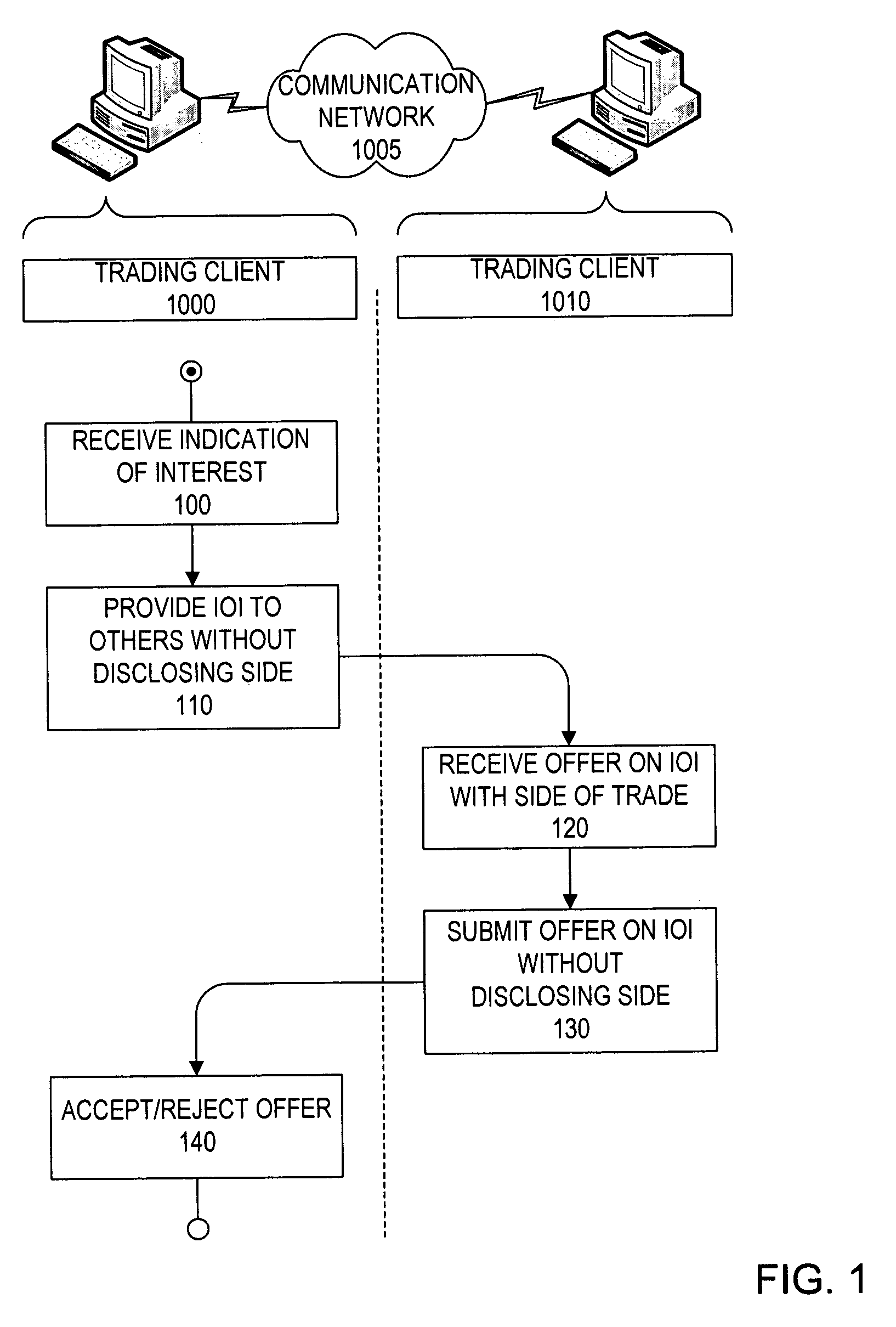System and method for facilitating trading of financial instruments
a technology of financial instruments and trading systems, applied in the field of system and method for facilitating trading of financial instruments, can solve the problems of regretting placing the order, not showing the buy or sell order, and the system failing to provide for trading orders of all lot sizes
- Summary
- Abstract
- Description
- Claims
- Application Information
AI Technical Summary
Problems solved by technology
Method used
Image
Examples
example a
[0254] first trader places a large limit order, priced inferior to the NBBO, into a central order book. A second party clicks on the first party's inferiorly priced order in the central order book and executes with it. Simultaneously, the trading system identifies better priced smaller orders by third parties and executes with them on behalf of the first party, thus allowing the first party to make an instant profit on at least a portion of the shares he received from the second party.
[0255] All trade executions priced better than the first party's price may be given to the first party. The first party offers the second party a guaranteed price in exchange for a guaranteed set number of shares. In exchange for this offer, the second party grants the first party first dibs on the better priced limit orders available in the market. The combined number of shares displayed at the better prices should be less than the first party's offer. If the number of shares displayed at better pric...
example b
[0256] party A places a limit order to buy 200,000 shares of MSFR at $25.23 into a trading system with a central order book. The NBB (National Best Bid) of MSFT is $25.25. Party B clicks on party A's order and agrees to sell 200,000 shares of MSFT at $25.23. The trading system attempts to grab all limit orders priced at $25.24 and $25.25 in it and other trading systems. The trading system executes 35,000 shares at an average trade price of $25.247. These trades are allocated to the Party A. Party A now has a 165,000—share long position in MSFT at an average execution price of $25.226. Party B has sold his 200,000 share position at $25.23. If party B had sent a market order, his execution price would have been much lower than $25.23. Both parties benefit: party A gets a better execution than he would otherwise receive, and Party B benefits because he was able to dispose of his entire position at a greater price than he would have obtained had he sent in a market order.
[0257]FIG. 34 ...
PUM
 Login to View More
Login to View More Abstract
Description
Claims
Application Information
 Login to View More
Login to View More - R&D
- Intellectual Property
- Life Sciences
- Materials
- Tech Scout
- Unparalleled Data Quality
- Higher Quality Content
- 60% Fewer Hallucinations
Browse by: Latest US Patents, China's latest patents, Technical Efficacy Thesaurus, Application Domain, Technology Topic, Popular Technical Reports.
© 2025 PatSnap. All rights reserved.Legal|Privacy policy|Modern Slavery Act Transparency Statement|Sitemap|About US| Contact US: help@patsnap.com



